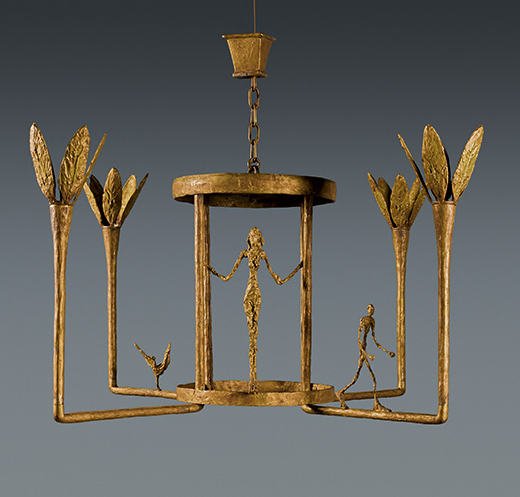Using the device of a chandelier, Giacometti creates a highly theatrical setting on which the protagonists play out an unknowable and unresolved drama. In the years after the Second World War, his figures were reduced to their bare essential form, displaying an austerity that embodied the artist’s existentialist concerns, and reflecting the lonely and vulnerable human condition. Here, individual figures are neither alone nor placed together. Giacometti was fascinated by spatial relationships and the concept of movement within a single work, and the cage-chandelier allowed him to bring together two of the most common spatial arrangements of the post-war period – cages and the city square. This results in interweaving themes of isolation, incommunicability and the strangeness of relationships between men and women.
Giacometti only produced such objects for friends, and the plaster model for Lustre avec femme, homme et oiseau was originally commissioned around 1949 by Louis Broder, a Swiss publisher based in Paris who specialised in producing printed editions of works by artists including Joan Miró and Pablo Picasso. Several years later Giacometti agreed to cast three bronzes from the plaster, of which the other two were acquired by the artist’s dealer Aimé Maeght and dealer Heinz Berggruen – who donated the plaster original to the Centre Georges Pompidou in 1983.
The interest in the artist continues to rise, with recent retrospectives at the National Portrait Gallery and Tate Modern in London, and this rare piece sheds light on a little known aspect of his work.
EXHIBITION DATES
Hong Kong 30 January- 2 February
New York 12- 14 February
London 22 -28 February

























